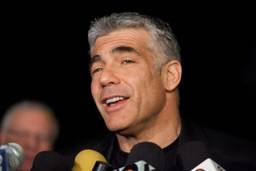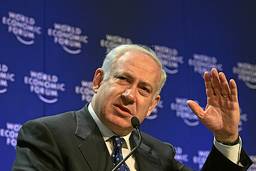The Israel Lobbies: Left, Right and Center
A new book helpfully details Jewish-American lobbying organizations spanning the political spectrum.
Ralph Seliger

As both a public-relations professional and an activist, Dan Fleshler fights the good fight on behalf of Americans for Peace Now and other organizations in the pro-Israel peace camp.
In his new book, Transforming America’s Israel Lobby: The Limits of Its Power and the Potential for Change (Potomac Books, April), Fleshler addresses two audiences: progressives who are not familiar with (or are skeptical of) the pro-Israel/pro-peace community and liberal supporters of Israel who fear that criticizing repressive Israeli policies would unduly harm that country.
Above all, he argues against a “zero-sum” perspective – that what hurts one side necessarily helps the other, or vice-versa. He explicitly argues for “even-handedness” on Mideast issues, a term that is a bugaboo for most of the pro-Israel community in the United States.
Fleshler writes in the large shadow of John Mearsheimer and Stephen Walt’s The Israel Lobby and U.S. Foreign Policy, which generated intense controversy upon its release two years ago. Fleshler’s book is partially a critique of The Israel Lobby, but its main intention is to suggest ways U.S. policy on the Israeli-Arab conflict can be moved in a more progressive, peace-oriented direction, and provide a more accurate analysis of how “the conventional Israel lobby” operates. (Fleshler labels as “conventional” the mainstream Jewish organizations that concern themselves with Israel, as opposed to the more progressive pro-Israel groups he supports.)
Transforming America’s Israel Lobby may also be viewed as a follow-up to J. J. Goldberg’s 1996 book Jewish Power: Inside the American-Jewish Establishment. Goldberg, then editor-in-chief of The Forward newspaper, was criticized for boldly proclaiming that American Jews actually have power. Some readers felt the book could prompt an anti-Semitic backlash.
But Goldberg reminded his readers that the American Jewish community was haunted by the Holocaust, when it was powerless to move even the ostensibly friendly administration of Franklin Roosevelt to intervene on behalf of Hitler’s Jewish victims. Anti-Jewish prejudice reached a high point in the United States during the 1920s and 1930s, but it was not until the 1960s that discrimination against Jews ended in housing, hotels and resorts, admissions to top universities and professional schools, and the hiring practices of prestigious law firms and Wall Street.
Goldberg’s book registered a triumphal note that American Jews had finally arrived at a place where they could safely exercise power as Americans and Jews without being severely slapped down. Yet this slap-down, according to many, has come a decade later with the work of professors Mearsheimer and Walt and the widely held view in the United States and abroad that foreign policy under George W. Bush was dictated by Jewish or Israeli interests.
While they may not have written an anti-Semitic book, Mearsheimer and Walt were remarkably insensitive in not understanding that as members of a historically oppressed and vulnerable minority group, many Jews would see hatred in the single-minded intensity of their arguments.
Fleshler, who opposed the Iraq war from its outset, might have expended more energy in debunking Mearsheimer and Walt’s central thesis that the so-called Israel Lobby was “a necessary but insufficient cause” for the 2003 invasion of Iraq.
The professors’ main conceptual failing was in equating the neoconservatives with the Israel Lobby – noxiously reducing the neocons to their Jewishness (not all are Jews) and their Jewishness to a right-wing species of Zionism (also a reductionist leap). They then elevated a few sub-cabinet level appointees to “deciders” in an administration that had no Jews of cabinet rank at the time.
Fleshler likes to quote Daniel Levy, an Israeli peacenik who helped draft the unofficial Geneva Accord of 2003 and now works on Middle East peace issues for think tanks in Washington, D.C. Levy – a player in the establishment of the new progressive pro-Israel lobbying organization, J Street, who despises the mainstream Israel lobby – was scathing in criticizing much of the organized Jewish community for “outsourcing” foreign policy analysis to the neocons.
But Levy also criticized Mearsheimer and Walt for confusing cause and effect; he regarded support for the Iraq war by some Jewish organizations as a sales job for a decision that was already made by the Bush administration for its own reasons.
Fleshler rather easily refutes the notion that the “Israel Lobby” is as powerful as the professors describe it, calling it a “400-pound gorilla” (rather than the proverbial 800 pounds) that exercises influence by “smoke and mirrors” because the appearance of power creates its own reality.
He documents with facts and figures that the American Israel Public Affairs Committee (AIPAC) and its allies are on the low end of the top 20 lobbying interests in Washington, in actual dollars spent. (A problem with Mearsheimer and Walt was that they took seriously AIPAC’s self-promoting claims of effectiveness.)
Transforming America’s Israel Lobby contains an admirable level of detail about the complex landscape and history of national U.S. Jewish organizations. The book’s “Guide for the Perplexed” section classifies more than 70 Jewish groups that weigh in on national issues. Far from monolithic, their history involves surprising twists and turns.
For example: Tom Dine, a liberal Democrat who built up AIPAC as its director in the 1980s, now works for the dovish Israel Policy Forum, which was formed as a counterweight to AIPAC with the encouragement of Yitzhak Rabin. Speaking of AIPAC last year, Dine declared: “These people have to go. …These people have stayed too long.”
Fleshler provides a modicum of hope that the United States can play a more constructive role in ending the conflict between Israel and the Arab and Islamic worlds. Still, his focus on U.S. politics may foster the illusion that solutions to the conflict lie only in Washington.
A less optimistic outlook, however, may be justified by the operation of another Israel lobby entirely, that of the Israeli settler movement, from whose ranks emerged the murderer of Rabin. The movement violently opposes any attempt by Israel to disengage from the occupied territories, whether unilaterally or by negotiations. Not to be outdone, the Islamic world has produced a slew of forces of its own that resist peace; Hamas and Hezbollah could be regarded as “lobbies,” but are more properly called “movements.”
Still, by detailing the existence of progressive organizations that strive for Israel’s security, Middle East peace and Palestinian rights, Transforming America’s Israel Lobby advances our understanding of the nature of America’s Israel lobbies, a diverse group of organizations that are too often referred to in the singular.








